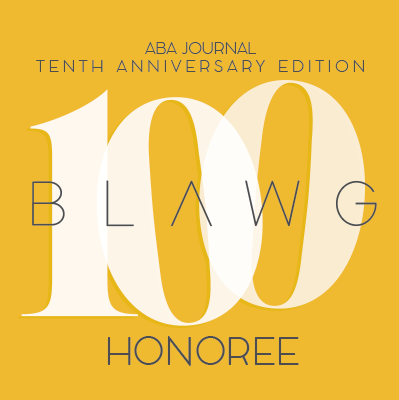In 2020, the Texas Supreme Court issued its opinion in ConocoPhillips Co. v. Ramirez, 599 S.W.3d 296 (Tex. 2020), a case involving the interpretation of a life estate and whether the creation of the life estate applied only to the surface interest, or to the minerals as well.

Photo by Pixabay
Background
Ildefonzo Ramirez died in 1941. He left his two children, Leon Juan and Felicidad, a total of 7,016 acres in Zapata County. Not all tracts of the estate were contiguous. Months after Ildefonzo’s death, the two siblings partitioned the surface estate and severed the minerals. Each sibling took 3,508 acres and an undivided 1/2 interest in the minerals under the entire 7,016-acre estate.
When Leon Juan died in 1966, he left half his surface estate (the 3,508 acres) to his wife, Leonor, and the other half equally to this three children, Leon Oscar, Sr., Ileana, and Rodolfo. As to his 1/2 mineral interest in the 7,016 acre estate, he left half to Leonor and the remainder to his children in equal shares.
In 1975, Leonor and the children partitioned their interests in the surface estate: Leonor took the 800-acre “West El Milagro Pasture,” Rodolfo took the 400 acre “East El Milagro Pasture,” and Leon Oscar, Sr. and Ileana jointly took the 1,058 acre “Las Piedras Pasture.” This partition expressly excluded the mineral interests.
In 1978, Leonor and Ileana swapped their surface tracts. The swap expressly excluded the mineral rights, giving Leonor an undivided 1/2 interest in the surface of the Las Piedras Pasture along with her son, Leon Oscar, Sr. owning the other half. At this point, Leonor still owned her 1/4 undivided mineral interest in the entire 7,016 acre tract as she inherited from Leon Juan.
Leonor died in 1988. Her will devised a life estate in “all of her right, title and interest in and to Ranch ‘Las Piedras'” to Leon Oscar, Sr. with the remainder to his living children in equal shares. The residuary of her estate was devised in equal parts to her three children, Leon Oscar, Sr., Ileans, and Rodolfo. At the time of her death, her children read are understood the will as giving her entire mineral estate, including Las Piedras Ranch, to them in equal shares as part of the residuary estate.
When Leon Oscar, Sr. died in 2006, his life estate in the Las Piedras Ranch was terminated, and the ranch passed to his three children as stated in Leonor’s will.
Lawsuit
In 2010, Leon Oscar, Sr.’s children filed suit against their aunt Ileana, uncle Rodolfo, and the oil companies with leases on the Las Piedras Ranch to determine the ownership interests in the mineral estate of the Las Piedras Ranch.
The children claimed that the life estate created by their grandmother’s will in favor of their father included both the surface and minerals of the Las Piedras Ranch. Thus, when their father had died, both the surface ownership and the minerals of the Las Piedras Ranch passed to them. Their aunt and uncle argued that when Leonor granted Oscar Leon, Sr. the life estate, that was only to the surface of the land. Her entire mineral estate, including that of the Las Piedras Ranch, passed through the residuary clause to her three children, rather than through the life estate to Oscar Leon, Sr.’s children.
The trial court entered a nearly $12 million dollar judgment in favor of Leon Carlos’ children. The San Antonio Court of Appeals affirmed. ConocoPhillips and Rodolfo petitioned the Texas Supreme Court for Review.
Texas Supreme Court Opinion
The issue before the Court was whether a devise of “all . . . right, title and interest in and to Ranch ‘Las Piedras’” refers only to a surface estate by that name as understood by the Leonor and beneficiaries at the time the will was made or also includes the mineral estate.” The Court emphasized that “‘[i]n construing a will, [its] focus is on the testatrix’s intent,’ which ‘must be ascertained from the language found within the court corners of the will’, if possible, and ‘determined as of the time the will is executed.’” If the will is subject to multiple interpretations, the Court can then consider “the circumstances existing when the will was executed.”
The Court looked at the language of the will, nothing the property “Ranch ‘Las Piedras’” was capitalized, indicating it had a specific meaning to Leonor. The previously executed 1975 partition agreement between Leonor and her children referred to the property as “Las Piedras Pasture” and only conveyed the surface, not the minerals. Similarly, the 1978 exchange agreement between Ileana and Leonor, in which the mother and daughter swapped their surface tracts, referred to the property as the “Las Piedras Ranch” and specified that the deed did not include the oil, gas, or other minerals beneath the surface. Based on this, the Court reasoned, “[t]hese documents clearly designate the 1,058-acre tract of land known as Las Piedras Ranch and Las Piedras Pasture as a surface estate only. Further, the history of conveyances since 1941 demonstrates the Ramirez family’s intent that each member’s mineral interest in the larger 7,016-acre tract remain undivided.”
Leon Oscar’s children argued that because Las Piedras Ranch was not contiguous with other tracts of the estate, this evidenced an intent to treat the minerals separately. However, when the family partitioned Leon Juan’s estate into West El Milagro Pasture, East El Milagro Pasture, and Las Piedras Pasture, the exchange specifically excluded the minerals. Thus, the Court interpreted this as an intent that the minerals be held jointly by the family members.
Thus, the Court held that the life estate created in Leonor’s will conveyed only the surface estate to Las Piedras Ranch, not the mineral estate. The Court reversed the court of appeal’s judgment and rendered a judgment for the petitioners (the oil and gas companies and Leonor’s children, Ileana and Rodolfo).
Key Takeaways
This case illustrates the importance of specifically addressing surface and mineral estate ownership in a will. The importance of this issue is compounded when multiple family members, spanning across multiple generations, own an interest in the estates, and the tracts of land are not contiguous. Although the Court found that the life estate conveyed only the surface estate, not the mineral estate, reaching this conclusion by the Texas Supreme Court cost years and an untold amount of money. This issue likely would have never arisen or could have been resolved sooner had Leonor’s will creating the life estate expressly stated whether that life estate included the surface, minerals, or both.
Furthermore, this case is also a good reminder to stay consistent with the names of property in deeds of exchange and other legal documents. Although the Court was not concerned that some documents referred to the 1,058-acre tract as “Las Piedras Pasture” while others referred to it as “Las Piedras Ranch” or “Ranch ‘Las Piedras’”, it is nevertheless good practice to be consistent in legal documents when referring to specific tracts of property. Further, when using these types of terms or descriptions in a legal document, including a definition expressly stating the property and specific estates to which they refer is important. This ensures continuity and reduces the likelihood of later confusion should any legal issues or disputes arise.











